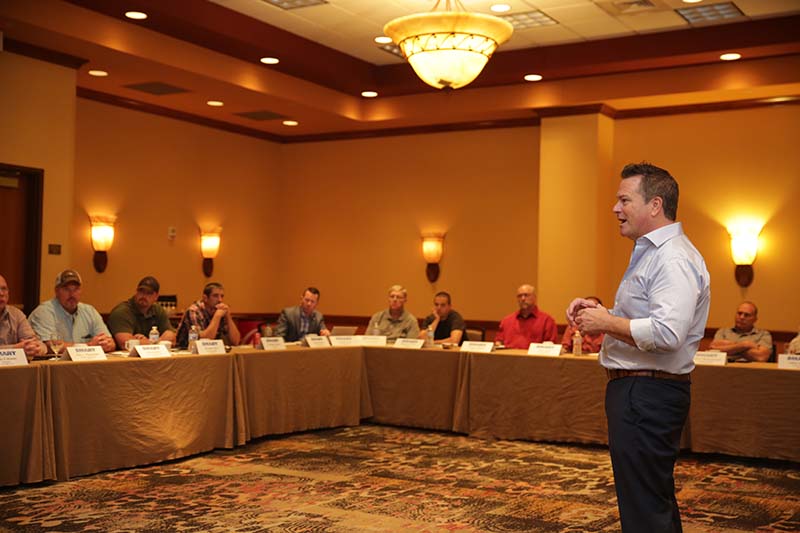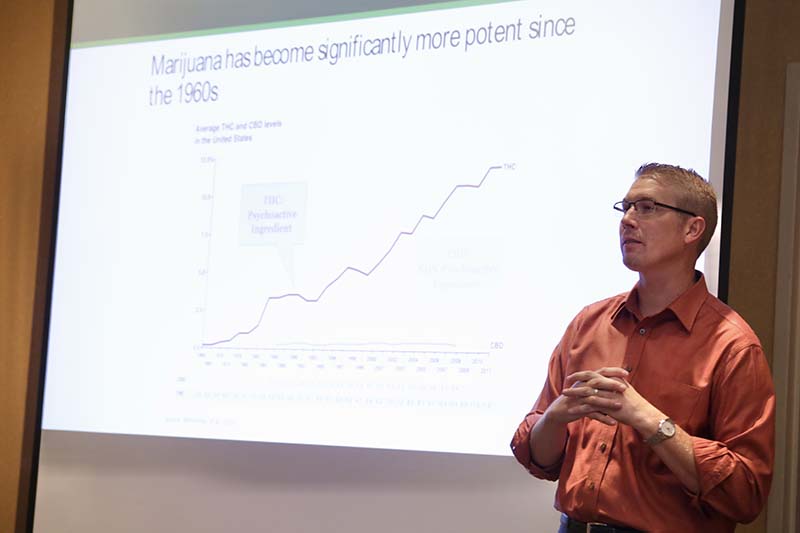Due to the pandemic, the last 18 months have been difficult for many, particularly from a mental health perspective. Lockdowns and social distancing severely disrupted daily life, and the consequences have been dire. For example, Centers for Disease Control and Prevention (CDC) recently reported that 41.5% of adults in the United States struggled with anxiety or a depressive disorder since the beginning of the pandemic. And while overall suicide rates in the U.S. declined slightly during the pandemic, in 2020, the CDC found that men working in construction had a suicide rate that was about four times higher than the general population.
While these statistics are alarming, the construction industry has been at high risk for suicide and mental health issues since long before the pandemic. Indeed, according to the CDC, the construction industry is one of the most at-risk for suicides, due to a number of factors that include the uncertainty of seasonal work, demanding schedules, and workplace injuries that are sometimes treated with opioids. HVACR associations are responding to these mental health issues, and they want contractors and technicians to know that help is available.
Risk Factors
Mental health in the skilled trades such as HVACR has become a serious issue, said Andy Gilliland, training coordinator at Sheet Metal Workers Local 9 in Colorado Springs, Colorado. He believes reasons for this can be attributed to the type of work involved, travel, changing work schedules, and poor financial planning.
“Skilled tradespeople can earn higher wages than other jobs, but there is a great deal of competition to keep those positions,” he said. “Workers are pitted against one another based on factors such as who can travel, who can survive short periods without working, who has child care, and who can afford a vehicle to travel. All of these create stressors that can affect mental health. Working in dangerous, loud, fast-paced, dirty, and unsafe conditions can also affect mental health.”

PEER SUPPORT: A powerful peer support network can be the difference between relapsing or finding a healthy life in recovery, said Chris Carlough, shown here teaching a SMART MAP course. (Courtesy of SMOHIT/SMART MAP)
Another big problem is drug use. In addition to the construction industry having the highest rate of suicide among all industries, it has the second highest rate of addiction, which is a significant problem for everyone who works within the construction industry, including HVACR, said Chris Carlough, director of education at the International Association of Sheet Metal, Air, Rail & Transportation (SMART) workers.
“I think there are multiple reasons why those working in the construction industry are in a more vulnerable place,” he said. “The physical nature of the job has always tended to lead to self-medication for pain issues. The stress of a job that is cyclical in nature tends to put more financial pressure and stress on our members and their families. And then there is the ‘work hard play hard’ culture.”
The pain issue is also a very real problem. “Those who work in construction and service are at a higher risk of injury, which can lead to musculoskeletal disorders, pain, and other ergonomic injuries that are often treated with opioids as pain management. The pain and/or an addiction to opioids can then lead to mental health issues,” said Raffi Elchemmas, executive director of safety, health, and risk management at Mechanical Contractors Association of America (MCAA).
Vice president of learning and development, Haller Enterprises LLC
Remove the Stigma
Unfortunately, many still view mental health problems as a weakness, and this may discourage some from seeking the help they need. As Carlough noted, contractors need to start the process of normalizing mental health in order to help end the stigma surrounding all mental health issues.
“One of the ways that we can do this is modeling empathy and being vulnerable enough to tell our stories and share our experiences,” he said. “Next, our contractors should take a look at their mental health options such as employee assistance programs and other resources around mental health that they can offer to their employees. Lastly, contractors should support peer advocacy training in their local area and help highlight those employees who are trusted and empathetic and bring them into the process of supporting all who need help with mental health issues.”
Peer support is important, as is having conversations with employees about mental health, said Eddie McFarlane, vice chair of the ACCA board of directors and vice president of learning and development at Haller Enterprises LLC in Lititz, Pennsylvania.
“Company owners and principals can make [mental health] a priority to be rolled out, like safe driving or new skills. This is a placeholder to start the ball rolling until it becomes part of the culture,” he said. “In addition, teammates should be encouraged to look out for each other. Just like when we see people injured on the job, we rush to support them — this can be similar. We can have honest, no-BS conversations with each other. Ultimately, much of a workplace culture comes down to how team members treat one another, so when someone does open up, we can support them and have caring conversations.”

SMART COURSE: Ben Cort teaches the SMART MAP program, which highlights the problems associated with mental health, with a primary focus on substance abuse and suicide prevention. (Courtesy of SMOHIT/SMART MAP)
However, construction workers tend to be a much more independent demographic, and they don’t use support networks in the same ways that others might, said Ben Cort, consultant with the SMART workers’ members assistance program (MAP).
“While we have close relationships, I think we tend to shy away from expressing feelings and pain to one another,” he said. “Changing this is hugely important and made much easier by having these conversations.”
In addition to having conversations with employees, contractors need to look for signs that their staff members may be struggling with mental health. For example, employees who are missing or late to work, who are anti-social, break rules, or are careless with safety and products. All of those are signs that an employee is suffering with mental illness, said Gilliland.
Contractors should take the following steps, said Elchemmas, if they believe an employee needs help:
- Don’t ignore it — speak up if you’re worried;
- Show your concern. Let them know you’ve noticed they are acting differently and inquire why they don’t seem like themselves;
- Respond quickly if you believe your friend/coworker is in crisis;
- Offer help and support; and
- Call the suicide prevention hotline or crisis text line for ideas to help your coworker (800-273-8255).
“Additionally, owners, company leaders, and safety professionals can help cultivate a culture that removes the stigma regarding seeking help for mental health,” said Elchemmas. “Train supervisors to recognize warning signs and symptoms and frequently encourage affected employees to seek professional help.”
Available Help
Several industry associations offer mental health resources for their members. For example, the SMART MAP program, which SMACNA promotes to its members, highlights the problems associated with mental health, with a primary focus on substance use disorder and suicide prevention. The program began training leaders at local unions eight years ago, and since then, more than 700 members have been trained as SMART MAP mentors.
“What’s more union than one union member helping and supporting another? That vulnerable relationship cultivates a powerful peer support network, which can be the difference between relapsing or finding a new and healthy life in recovery,” said Carlough. “Peer-trained members direct our members and their families struggling with mental health issues to resources focusing on chemical dependency and suicide prevention, walking with them every step of the way.”
MCAA is a member of the Construction Industry Alliance for Suicide Prevention, and the association makes the alliance’s suicide prevention resources available to its members. MCAA has also presented a suicide prevention training session for its members, and they have partnered with the Center for Construction Research and Training (CPWR) and other mental health experts to develop and present information on mental health to its members.
ACCA provides resources to help direct members to additional resources and also has a library of on-demand webcasts that includes mental health topics. Members are also encouraged to help one another. As McFarlane noted, “As someone who has had my own issues with mental health, I would invite anyone who is struggling to seek help and if they need to, they can feel free to reach out for a chat.”
And while the focus here has been on encouraging contractors to address the mental health of their employees, they should also not neglect their own issues.
“Analyzing ourselves for mental health issues can be difficult, because denial can cloud our judgment,” said Carlough. “For contractors who are looking to take a closer look at themselves, I would recommend asking a trusted coworker — the one who has been brutally honest with them in the past — and allow them the ability to continue that practice. Also, running a company can be extremely stressful. I recommend therapy for everyone.”



Report Abusive Comment